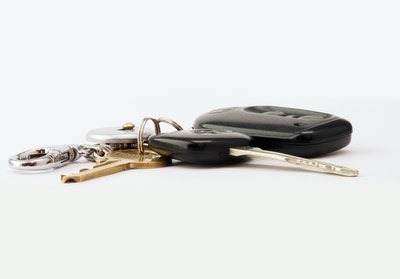How Are Roof Solar Panels Mounted?

Are you interested in getting solar panels for your roof? You’re not the only one. Many homes and businesses across the United States have made the switch to solar power.
If you’re new to the solar power world, you might have a few more questions than that. How are roof solar panels mounted? Don’t those things get damaged in bad weather? What’s involved in a solar panel installation?
In this article, we’ll provide answers to some of the questions you might have about solar panel installation. Keep reading to get the inside scoop.
Identify the Type of Solar Panels
The type of solar panel to mount roof solar panels will depend on the direction the roof faces. It also requires the amount of available space, the budget, and the environment in which it’s located.
Crystalline Solar Panels
Crystalline solar panels are the most common type of solar panel and the most efficient. These are rigid and usually made from silicone materials.
Thin-Film Solar Panels
Thin-film solar panels are lightweight and flexible and can be installed in a wider range of areas. They have a shorter lifespan than crystalline solar panels but are more affordable.
Polycrystalline Solar Panels
Polycrystalline solar panels are a mix of crystalline and thin-film panels. This panel offers a good balance between efficiency and affordability.
Hybrid or Two-in-One Solar Panels
Hybrid or two-in-one solar panels combine both crystalline and thin-film technologies. These are more expensive but offer maximum efficiency.
Prepare the Mounting Structure
Preparing the mounting structure is important to ensure that the structure is appropriate for the weight and size of the solar panels and that it follows local building codes and regulations. This could involve reinforcing the structure to bear heavier loads or adding foundations and anchors to the existing rafters.
It may also be necessary to provide an enclosed or weatherproof area to protect the installation from the elements. It’s secured properly in order to prevent accidental detachment or shifting.
It is also important to pay attention to the alignment of the panels to ensure that the solar array can take full advantage of sunlight.
Also, to maximize the efficiency of the system, it is essential to check the health of the roof and inspect the mounting structure for any visible signs of damage or wear before committing to the installation process.
Secure the Panels to the Roof
Before beginning, you must ensure the roof is in good condition and free from inclines, cracks, or other areas of concern. Also, mounting hardware must be secured properly and strong enough to hold the panels in place.
The next step is finding the optimal orientation and placement of the panels, making sure they’re placed at the right angle to maximize the amount of sunlight they absorb. For metal roof panels, secure them directly to the roof with screws that are made of stainless steel or corrosion-resistant material and secure the panels to braces on the roof rafters.
If you have a slanted roof, you may need to use brackets to adjust the angle of the panels to maintain their best performance. Once everything is secured, your solar panels are ready to start producing sustainable energy.
Adjust the Solar Panel Angle
Knowing the proper angle at which to install the solar panel can help maximize the life of the system and decrease energy loss. The proper angle for a solar panel depends on the location, but in most cases, a tilt of around 30 degrees from horizontal is ideal.
This tilt should be adjusted over a range between 15 and 40 degrees from horizontal to take into account any seasonal changes in the sun’s direction. When installing solar panels, they should also be adjusted to face true south in order to capture the maximum amount of sunlight year-round.
Mounting the solar panel so that it is slightly angled to the direction of the sun will allow for optimal sunlight capture. Also, due to seasonal changes in the angle of the sun, the inclination should be adjusted several times a year to ensure maximum efficiency and prevent energy loss.
Wire the Solar Panels Together
It is important to properly wire the solar panels together in order to mount roof solar panels safely and effectively. The first step is to identify the number and size of the solar panels and determine the wattage needed.
After selecting the appropriate size and quantity of solar panels, connecting the panels together properly is the next important step. All wiring should be done according to the manufacturer’s instructions and local codes.
A solar charge controller and a battery bank may be needed, which must be wired and connected securely. Wiring the solar panels together to mount roof solar panels requires careful calculation and the proper tools and materials; this will ensure a secure and reliable solar energy solution.
Getting Help From Professionals
Installing rooftop solar panels can be a difficult, tricky job. It does require some specialized knowledge and skills, as well as a commitment to safety.
It is usually best left to professionals for these reasons. Professionals will have the necessary tools and equipment needed for the job, as well as the experience necessary to know how to handle any situation that arises.
They will take the time to read the specs of the job and plan accordingly, ensuring that the job’s done effectively and efficiently. Working with professionals can also save money and time, as they will know the best methods and practices to follow.
They will also know the applicable safety regulations and will be better able to ensure that their work is done safely and in accordance with those regulations. With these experts, homeowners can expect a reliable, high-quality job that is done with the utmost professionalism, safety, and care.
Learn More About Roof Solar Panels Today
Mounting a roof solar panels is a crucial step in a successful installation. Professional installation is recommended for a secure and long-lasting setup.
If you’re considering residential or commercial solar panel installation, don’t hesitate to contact a trustworthy solar panel installation service to get the job done.
Did you find this article helpful? Visit more of our blogs!






